
“The Hobbit” was one of the first major games produced in Australia, and is considered a classic text adventure. In 1985, it was voted number 1 in Sinclair User’s ‘Top 50 Spectrum Software Classics’.
To create the game Beam’s director Alfred Milgrom advertised on the bulletin board at Melbourne University hiring students Veronika Megler and Philip Mitchell. Originally tasked with making the “best adventure game ever’. Milgrom secured a licence to use J.R.R Tolkien’s popular book the “The Hobbit” by using Melbourne House’s book publishing relationships, and promising that a copy of the book was to be included with the game. The inclusion of the book with the game was also valuable to the player, as knowledge of the story was needed to solve the challenges that Megler had designed.
“The Hobbit” was remarkable for both its sophisticated parser and creation of a world that appeared open – were time passed, objects had physics and characters autonomy.
The games interface, Philip Mitchell’s parser Inglish allowed for full sentences with adjectives, where previously most adventure games only allowed for simpler verb-noun combinations. The program was complex enough to intuitively understand pronouns, adverbs, punctuation and prepositions. This allowed players to interact with the games in a way never before possible. Commands could be strung together not just to control the actions of the player character but with the inclusion of “SAY” directive could be issued to non player characters .
In designing the game world Megler wanted to create a place that felt more alive. Objects in the game are given a size and weight ratio which affects your ability to interact with them. You could place one object inside or on top of another. If your character was sitting on an object and that object was thrown, then your character would go with it. Another point of difference with this game and any previous text-based adventure game was that events happened in real time. If you walked away from the computer things would happen with out you. As you played each non-player character and monster had a turn when you did, meaning that many unforeseen events could occur, Elrond might kill the Warg making your journey less troublesome. Gandalf might get himself killed making that game more challenging. The set of characters actions were in part randomised but also affected by the actions of the player so attacking them was not a good idea. As was learnt by many players who became impatient with Thorin and his constant singing. At this time the expression “Thorin sits down and starts singing about gold.” entered the popular culture of gamers.
Players found “The Hobbit” constantly appealing because non-player characters existed independently. They were able to roam freely through the game-world and would not necessarily do the same thing twice. This and the games text driven physics enabled the game to be repeated and played in different ways. Due to the openness of its world, “The Hobbit” was an early game to support ‘emergent gameplay’.
“The Hobbit” was a challenging game to play requiring trail and error to progress and solve puzzles. Letters requesting assistance were sent to popular magazines who devoted columns to advising players. One player David Elkan wrote an entire guide to playing the game which he sent to Melbourne House who published it as book ” A guide to playing The Hobbit” (1984).
References: ACMI Alfred Milgrom interview, 28 April 2006: Interview text provided by Alfred Milgrom 1st March 2013. , Maher, J, “The Hobbit”, The Digital Antiquarian, http://www.filfre.net/2012/11/the-hobbit/; Newman J, Simons, I (2007) 100 Videogames, BFI Screen Guides, BFI Publishing, London
Version Information
Developer: Philip Mitchell – Design, Port, Programming
Developer: Veronika Megler – Design, Programming
Developer: Philip Mitchell – Design, Port, Programming
Developer: Veronika Megler – Design, Programming
“I remember because I was going to work in the office, and I did work in the office all night that night… I started the compile before they started the yacht race and it was still going when Australia II had won the yacht race. The one compile… You couldn’t afford too many bugs in those days because you’d do a five hour compile …and yeah, … you’d have to start again. But I do remember that, because the final compile of the tape version took longer than it took the America’s Cup yacht race. And then you had Bob Hawke in the morning saying, you know, “Anybody …sacks somebody for not going to work is a bum,” or whatever, and I’d been working all night…”
Developer: Gregg Barnett – Port
Developer: Philip Mitchell – Design, Programming
Developer: Veronika Megler – Design, Programming
Developer: Philip Mitchell – Design, Port, Programming
Developer: Veronika Megler – Design, Programming
Beam’s Dragon game ports were done by Dieter (?)
Developer: Philip Mitchell – Design, Programming
Developer: Veronika Megler – Design, Programming
Developer: Veronika Megler – Design, Programming
Developer: Philip Mitchell – Design, Programming
Developer: Russel Comte – Graphics
Developer: Greg Holland – Graphics
Developer: Neil Brennan – Music
Platform/s: Apple II
Developer: Philip Mitchell – Design, Port, Programming
Developer: Veronika Megler – Design, Programming
Developer: Russel Comte – Graphics
Developer: Greg Holland – Graphics
Developer: Neil Brennan – Music
Platform/s: MSX
Developer: Philip Mitchell – Design, Port, Programming
Developer: Veronika Megler – Design, Programming
Developer: Russel Comte – Graphics
Developer: Greg Holland – Graphics
Developer: Neil Brennan – Music
Platform/s: Macintosh
Developer: Philip Mitchell – Design, Port, Programming
Developer: Veronika Megler – Design, Programming
Developer: Russel Comte – Graphics
Developer: Greg Holland – Graphics
Developer: Neil Brennan – Music
Platform/s: BBC Micro
Developer: Philip Mitchell – Design, Port, Programming
Developer: Veronika Megler – Design, Programming
Developer: Russel Comte – Graphics
Developer: Greg Holland – Graphics
Developer: Neil Brennan – Music
Platform/s: DOS
Developer: Philip Mitchell – Design, Port, Programming
Developer: Russel Comte – Graphics
Developer: Greg Holland – Graphics
Developer: Neil Brennan – Music
Platform/s: PC
Developer: Philip Mitchell – Design, Port, Programming
Developer: Veronika Megler – Design, Programming
Developer: Russel Comte – Graphics
Developer: Greg Holland – Graphics
Developer: Neil Brennan – Music
Game Meta
Other Names
Additional Creators
Value Chain
Screenshots
- Loading Screen,Tape, ZX Spectrum
- Screenshot, Tape, ZX Spectrum
- Screenshot, Tape, ZX Spectrum
- Screenshot, Tape, ZX Spectrum
- Screenshot, Tape, ZX Spectrum
- Screenshot, Tape, ZX Spectrum
- Screenshot, Disk Version, C64
- Title Page, Disk Version, C64
- Wilderlands Places, Disk, C64
- Wilderlands Places, Disk, C64
- Wilderlands Places, Disk, C64
- Wilderlands Places, Disk, C64
- Wilderlands Places, Disk, C64
- Wilderlands Places, Disk, C64
- Wilderlands Places, Disk, C64
- Wilderlands Places, Disk, C64
- Wilderlands Places, Disk, C64
- Wilderlands Places, Disk, C64
- Wilderlands Places, Disk, C64
- Wilderlands Places, Disk, C64
- Wilderlands Places, Disk, C64
- Wilderlands Places, Disk, C64
- Wilderlands Places, Disk, C64
- Wilderlands Places, Disk, C64
- Wilderlands Places, Disk, C64
- Wilderlands Places, Disk, C64
- Wilderlands Places, Disk, C64
- Wilderlands Places, Disk, C64
- Wilderlands Places, Disk, C64
- Wilderlands Places, Disk, C64
- Wilderlands Places, Disk, C64
- Wilderlands Places, Disk, C64
- Wilderlands Places, Disk, C64
- Wilderlands Places, Disk, C64
- Wilderlands Places, Disk, C64
- Wilderlands Places, Disk, C64
- Wilderlands Places, Disk, C64
- Wilderlands Places, Disk, C64
- Wilderlands Places, Disk, C64
- Rivendell, Disk, C64
- River by Mountain, Disk, C64
- Sea, Disk Version, C64
- Secret back-door to Smaugs, C64
- Secret Valley, Disk, C64
- Spiders, Disk Version, C64
- Stream in Forest, Disk, C64
- The End, Disk, C64
- Thick Forest, Disk, C64
- Top of the Mountains, C64
- reasure, Disk Version, C64
- Trolls Cave, Disk, C64
- Trolls Clearing, Disk, C64
- Trolls Clearing, Disk, C64
- Water, Disk Version, C64
- Waterfall, Disk Version, C64
Box Art
- The Hobbit Spectrum 48k Tape and Manual
- The Hobbit Spectrum 48k Tape
- Tolkien Trilogy box front cover (C64)
- Tolkien Trilogy box back cover (C64)
- Original Packaging, Front, ZX Spectrum
- Original Packaging, Back, ZX Spectrum
- Cassette Inlay, ZX Spectrum
- Box Art, Front, Tape, Amstrad
- Box Art, Back, Tape, Amstrad
- Box Art, Front, Tape, C64
- Box Art, Back, Tape, C64
- Box Art, Front, Tape, BBC Micro
- Box Art, Back, Tape, BBC Micro
- Box Art, Front, Disc, Apple II
- Box Art, Back, Disc, Apple II
- Box Art, Front, MSX,
- Box Art, Back, MSX
- Box Art, Front, Oric
- Box Art, Back, Oric
- Box Art, Front, PC
- Box Art, Back, PC
Media
- Magazine, May 1984, p.56
- Review, Sinclair User, March 1983
- Sinclair User, August 1983
- Your Computer, January 1983, p.50
- Your Computer, January 1983, p.51
- Your Computer, January 1983, p.52
- Ad, Your Computer, Oct. 1983
- ZX Computing, April/May 1983 p.76
- ZX Computing, April/May 1983 p.77
- ZX Computing, April/May 1983 p.78
Manuals & Walkthroughs
Video


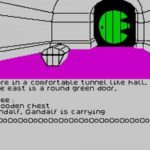
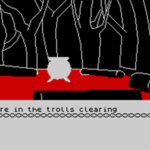

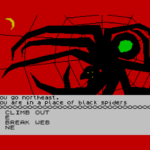


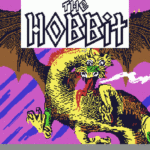
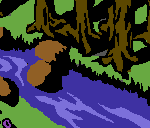


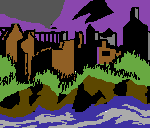


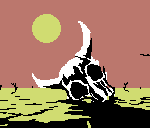

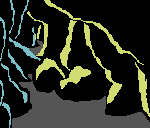


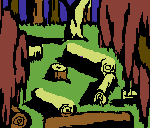










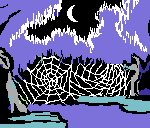





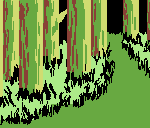






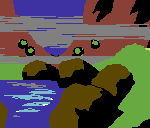
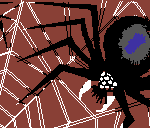


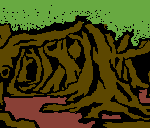

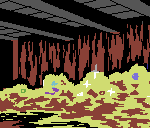




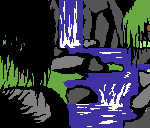
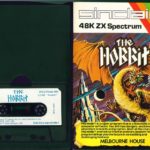




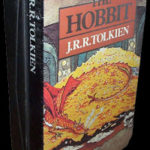
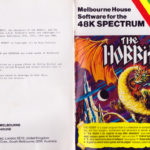
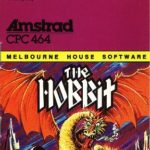
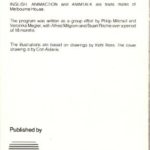







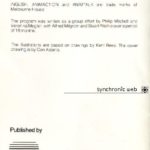
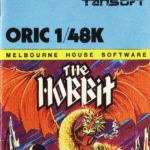
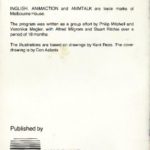

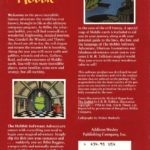





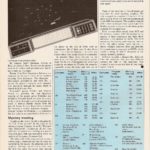
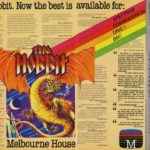
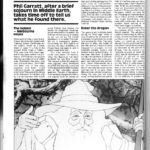

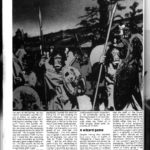
Commodore User
Issue 2 (Nov 83)
5/5
Your Commodore
Issue 1 (May 85)
75%
Zzap!
Issue 1 (May 85)
75%